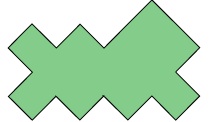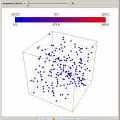
This article from Scientific American presents three puzzles by Martin Gardner, a respected mathematician who died recently. Give ’em a try.

This article from Scientific American presents three puzzles by Martin Gardner, a respected mathematician who died recently. Give ’em a try.
Vladimir Arnold, one of the most important mathematicians of the 20th century, died Thursday in France. Among many awards and recognitions Arnold received in his professional career, he was presented the Crafoord Prize in 1982 and in 2001, the World Prize in Mathematics.
He is also known as the coauthor of the KAM theorum of classical mechanics, for which the ‘A’ in KAM is his initial. The theorem deals with mechanical trajectories.
In his later years, he worked at the Steklov Mathematical Institute in Moscow and the Moscow State University. Arnold was 72 years old.

Think you make many decisions "off the cuff"? Mathematic findings indicate there may be more science to our choices.
If you have the necessary math know-how, it can really pay.
John Tate, a scientist from the University of Texas at Austin was recently awarded the Abel Prize–thought of as math’s Nobel–for his work with Algebraic Number Theory. It’s one of the math principles that lies at the heart of internet security, a facet of everyday living in today’s world.
And the world desperately needs top mathematicians to help safeguard our cyber information. The prize, presented by the King of Norway, includes a $1 million cash award.
 It may not seem like a spectacular feat for a group of university mathematicians to solve an equation, but when that equation is 140 years old (not to mention, has implications for many other scientific fields), it begins to catch some attention.
It may not seem like a spectacular feat for a group of university mathematicians to solve an equation, but when that equation is 140 years old (not to mention, has implications for many other scientific fields), it begins to catch some attention.
The Boltzmann Equation has been used since the late 1860s to help mathematicians and scientists model how gases distribute themselves and respond to environmental changes. Although it has been widely used for such a long time (and has worked, for that matter), it had not been explained until now.
Two researchers from the University of Pennsylvania recently unlocked the equation to help us see that it does, in fact, hold water. Their work has added validity to many scientific practices of the past century.